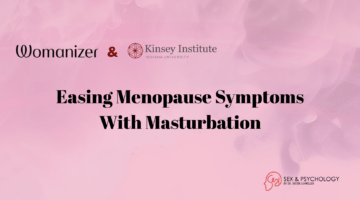Women Overestimate How Effective Most Forms of Contraception Really Are
May 21, 2012 by Justin Lehmiller
Most heterosexual couples assume that if they’re using “the pill” or condoms to prevent pregnancy, they probably don’t have much to worry about because these forms of contraception are highly effective. The unfortunate reality, however, is that they are not as effective as many of us think. In fact, a new study finds that most women significantly overestimate how well most forms of reversible birth control actually work.
In this study, 4,144 women living in St. Louis, Missouri completed a questionnaire inquiring about the effectiveness of various forms of contraception. Specifically, participants were given a list of birth control methods (including contraceptive pills, patches, rings, and condoms) and were asked what percentage of women were likely to get pregnant over the course of one year using each method (less than 1%, 1-5%, 6-10%, or more than 10%). After completing the survey, all participants were given comprehensive contraception counseling in which they were provided with accurate information and advice in order to help them choose the form of birth control that best meets their needs.
Results indicated that only 2 in 5 women correctly guessed the effectiveness of condoms, and fewer than 1 in 5 correctly guess the effectiveness of contraceptive pills, patches, and rings. The majority of women (nearly two-thirds) overestimated how effective each of these methods were at preventing pregnancy.
Part of the reason for the lack of knowledge observed in this study probably stems from the fact that we often hear about the effectiveness of contraception under perfect use (i.e., when it is used correctly and consistently, without any mistakes). When birth control is used perfectly, there is a very low risk of pregnancy. For example, condoms are 98% effective and “the pill” is 99% effective at preventing pregnancy when used perfectly. Such statistics are very misleading, though, because human beings are far from perfect and we sometimes make mistakes (e.g., we may use condoms incorrectly or forget to take pills). Thus, when you factor in human error, the actual or typical use effectiveness rates are much lower (82% for condoms and 91% for pills/patches/rings) and these are the rates that we should really be focusing on and teaching people about. What these typical use rates mean is that for every 100 women using condoms, 18 will get pregnant each year, and for every 100 women using “the pill,” 9 will get pregnant in a given year. As you can see, these methods carry a significant risk of unintended pregnancy.
What are the most effective forms of reversible birth control on the market? Those would be the intrauterine device (IUD) and contraceptive implant (known as Implanon). With both perfect and typical use, each of these methods is more than 99% effective (i.e., fewer than 1 out of 100 women will get pregnant using them). Both of these methods require more of an upfront cost to the user because these devices must be placed inside the body by a medical professional. Specifically, the IUD is placed inside the uterus and the implant is usually placed inside the upper arm. In both cases, the devices release hormones that prevent pregnancy (although there is also a version of the IUD that releases copper ions instead of hormones, and those ions work as a spermicide. Both types of IUDs are about equally effective). Until recently, the main drawback of the IUD and implant was cost (up to $800 initially); however, as a result of the Affordable Care Act, insurers are now required to cover all types of contraception, so cost may not be as much of an impediment anymore (although you’ll want to check with your own insurer for the specifics). It is also worth noting that both of these methods provide several years of protection (the implant works up to three years, and the IUD up to five).
The most important thing to take away from this is that there are multiple forms of birth control on the market and it is well worth your time to explore the different options available and compare costs, effectiveness rates, and side effects to find the one that works best for your body and your relationship.
Want to learn more about Sex and Psychology? Click here for previous articles or follow the blog on Facebook (facebook.com/psychologyofsex), Twitter (@JustinLehmiller), or Reddit (reddit.com/r/psychologyofsex) to receive updates.
To read more about this research, see: Eisenberg, D. L., Secura, G. M, Madden, T. E., Allsworth, J. E., Zhao, Q., & Piepert, J. F. (in press). Knowledge of contraceptive effectiveness. American Journal of Obstetrics and Gynecology.
Image Source: iStockphoto.com

Dr. Justin Lehmiller
Founder & Owner of Sex and PsychologyDr. Justin Lehmiller is a social psychologist and Research Fellow at The Kinsey Institute. He runs the Sex and Psychology blog and podcast and is author of the popular book Tell Me What You Want. Dr. Lehmiller is an award-winning educator, and a prolific researcher who has published more than 50 academic works.
Read full bio >


